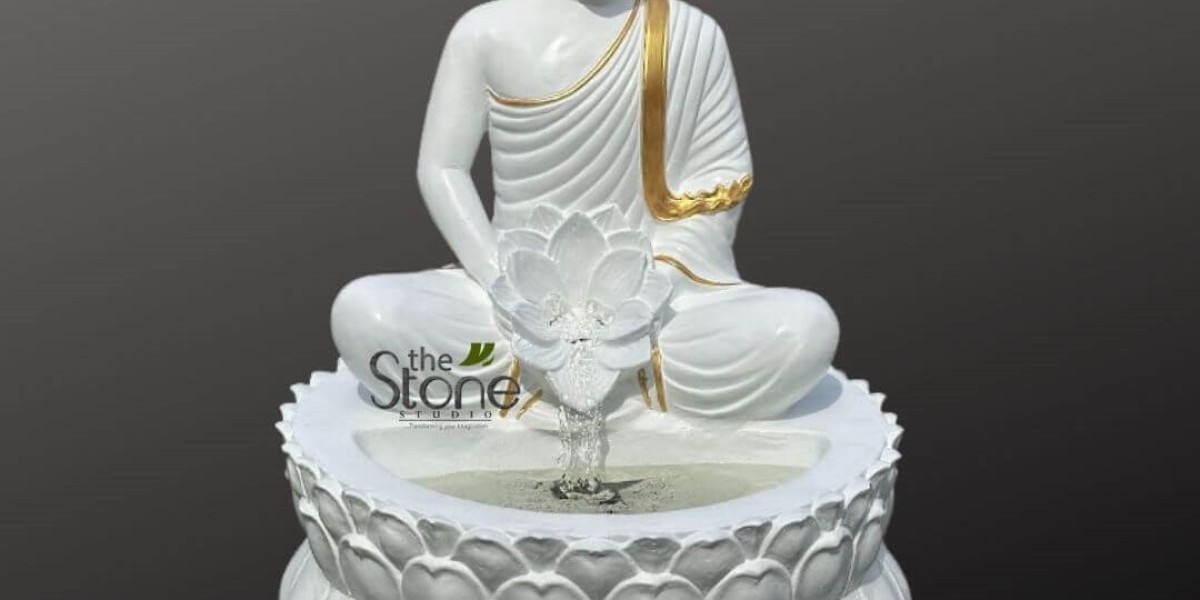Buddha statues are not merely works of art; they are spiritual symbols carrying profound meaning. Each statue tells a story, reflecting the philosophy of Buddhism, the cultural context of its creation, and the devotion of those who crafted it. Over centuries, the depiction of Buddha has evolved across Asia, influenced by local traditions, materials, and artistic sensibilities. Today, from ancient stone carvings to modern Fibre Buddha statues, these icons remain an integral part of homes, temples, and public spaces.
In this article, we explore the history and evolution of Buddha statues across Asia, understanding their origins, styles, and how they have adapted with time.
Origins of Buddha Statues: From Symbolism to Form
When Buddhism originated in India around the 5th–6th century BCE, early followers avoided depicting Buddha in human form. Instead, they used symbols such as the Bodhi tree, footprints, the wheel of Dharma (Dharmachakra), and a stupa to represent his presence and teachings.
It wasn’t until the Kushan period (1st–2nd century CE) that the first anthropomorphic images of Buddha appeared. This transformation was significant, as it marked a shift from abstract symbols to lifelike representations.
Early Influences
Gandhara School of Art (Afghanistan and Pakistan): This style drew inspiration from Greco-Roman art, portraying Buddha with wavy hair, a defined nose, and a draped robe resembling a toga. These statues often displayed a serene yet regal demeanor.
Mathura School of Art (India): Unlike Gandhara’s classical elegance, Mathura art highlighted robust, spiritual energy. The Buddha Statue here was more indigenous, with simpler robes and an emphasis on spiritual calmness rather than physical beauty.
Spread of Buddhism and the Rise of Regional Styles
As Buddhism spread from India to other parts of Asia through trade and cultural exchange, the art of creating Buddha statues adapted to local cultures.
China
Buddhism entered China via the Silk Road around the 1st century CE. Chinese artisans initially followed Indian and Gandhara styles but soon incorporated local aesthetics. Buddha statues in China featured:
Rounder faces and softer expressions compared to Indian styles.
Flowing robes that covered both shoulders, resembling Chinese clothing.
Use of bronze and stone for temple sculptures, and later ceramics for smaller statues.
By the Tang Dynasty (618–907 CE), Chinese Buddha statues became highly elaborate, adorned with intricate details symbolizing compassion and wisdom.
Japan
Buddhism reached Japan from China and Korea in the 6th century CE. Japanese Buddha statues reflect Zen simplicity and elegance:
Made primarily from wood and bronze.
Feature calm expressions and seated meditation postures.
Emphasis on harmony and spiritual tranquility.
Thailand and Southeast Asia
Thai Buddha statues are instantly recognizable by their slender, graceful form and stylized flame-like ushnisha (a cranial protuberance symbolizing wisdom). They often depict Buddha in:
Walking posture (unique to Thai art).
Sitting with hands in Bhumisparsha mudra (earth-touching gesture).
Materials like gold leaf and bronze were common, making these statues radiant and divine.
Symbolism Behind Buddha Statues
Every element of a Buddha statue—posture, hand gesture (mudra), facial expression—holds deep meaning:
Meditation Pose (Dhyana Mudra): Represents inner peace and enlightenment.
Teaching Pose (Dharmachakra Mudra): Symbolizes the first sermon at Sarnath.
Reclining Pose: Depicts Buddha during his final moments, attaining Mahaparinirvana.
These symbolic representations helped devotees connect with different aspects of Buddha’s life and teachings.
Evolution of Materials: From Stone to Fibre Buddha Statues
Traditionally, Buddha statues were carved from stone, bronze, or wood, reflecting both durability and sacredness. In modern times, however, the demand for lightweight, durable, and cost-effective options has led to the rise of Fibre Buddha statues.
Why Fibre Buddha Statues Are Popular Today
Lightweight: Easy to move and install, especially for homes and gardens.
Durability: Resistant to moisture and weather, making them ideal for outdoor spaces.
Affordability: Compared to marble or bronze, fibre statues offer an economical choice without compromising aesthetics.
Design Versatility: Fibre allows intricate detailing and a variety of finishes, including marble look, metallic tones, or vibrant colors.
For modern homeowners, a Fibre Buddha statue is not just a decorative item—it’s a spiritual centerpiece that blends tradition with contemporary style.
Modern Interpretations of Buddha Statues
Today, Buddha statues are found not only in temples but also in homes, offices, gardens, and meditation centers. This modern usage focuses on both aesthetic appeal and spiritual significance. Interior designers often recommend placing a Buddha statue in:
Meditation corners for serenity.
Living rooms to attract positive energy.
Gardens as a focal point for tranquility.
Contemporary artists have also experimented with Buddha statues, creating minimalist, abstract, and eco-friendly versions. Fibre, resin, and even recycled materials are being used to craft unique designs that align with sustainable living trends.
Tips for Choosing and Placing a Buddha Statue
When selecting a Buddha statue, consider the following:
Material: Stone and bronze for traditional feel, fibre for modern homes.
Size: Large statues for gardens or entryways; smaller ones for indoor altars.
Posture: Meditation pose for peace, teaching pose for learning environments, reclining pose for relaxation spaces.
Direction: Traditionally, facing east (toward the rising sun) is considered auspicious.
Cultural and Spiritual Legacy
The history of Buddha statues across Asia is a journey of adaptation and continuity. From ancient stone-carved masterpieces to Fibre Buddha statues adorning modern homes, these figures embody peace, wisdom, and compassion. They remind us of a timeless philosophy that transcends geographical boundaries.
As lifestyles change, the essence of Buddha statues remains the same—offering a sense of calm in a fast-paced world. Whether placed in a temple or a cozy living room, they continue to inspire mindfulness and spiritual growth.
Final Thoughts
The evolution of Buddha statues is a fascinating blend of art, culture, and spirituality. Each statue, regardless of its size or material, serves as a reminder of Buddha’s eternal message: inner peace and universal compassion. In today’s era, the availability of materials like fibre ensures that everyone can bring home a piece of this serenity without compromising on authenticity or beauty.













